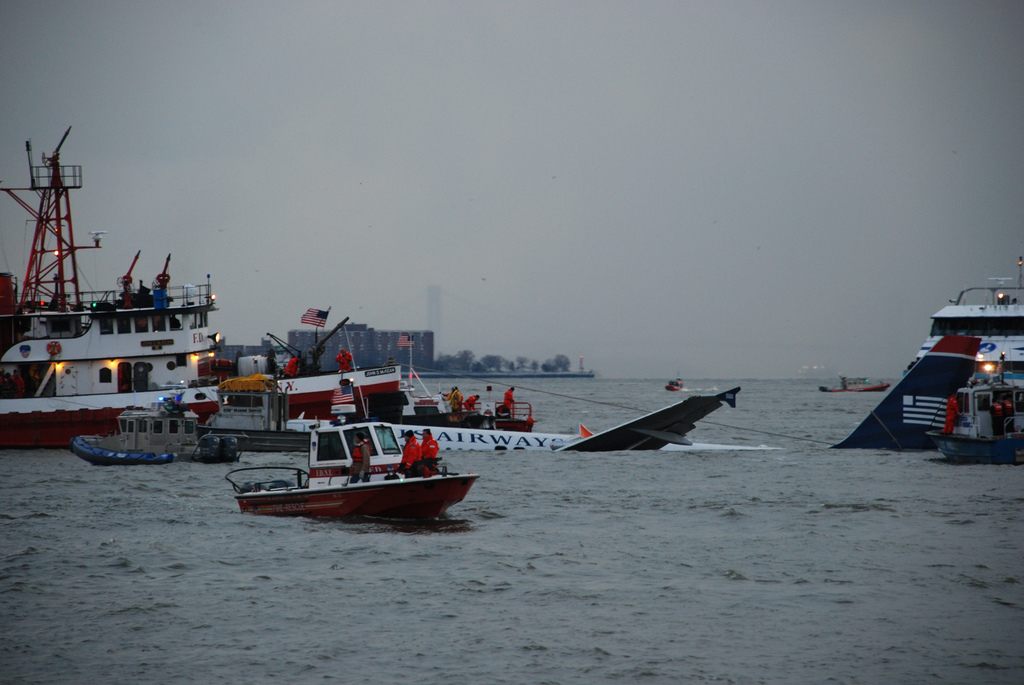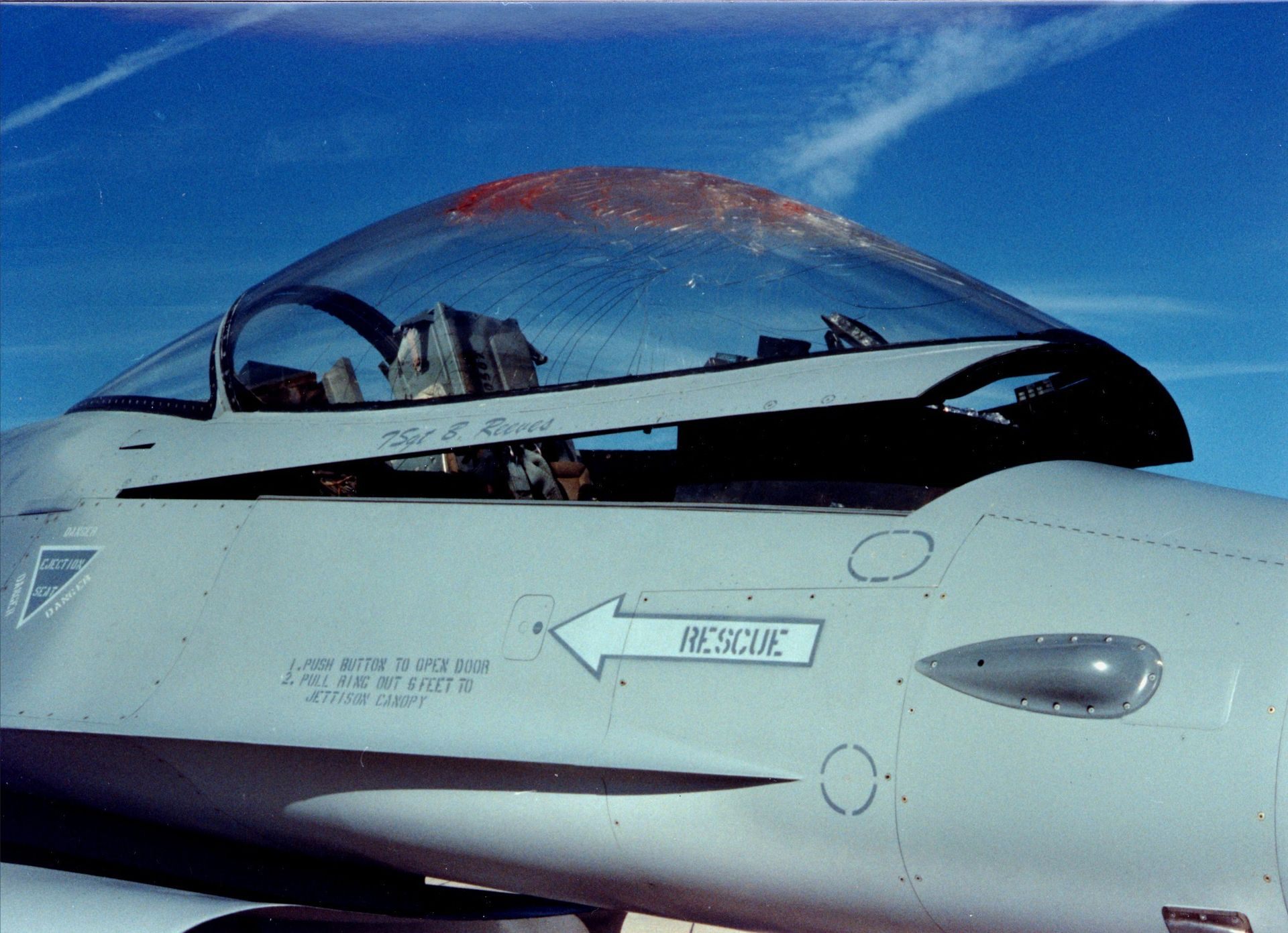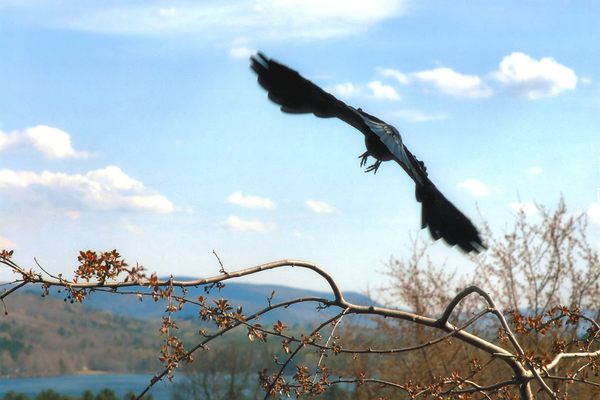Nobody Wins The War Between Birds and Planes

It’s a bird! It’s a plane! It’s both at the same time! (Photo: Alf van Beem/WikiCommons CC0 1.0)
This past Wednesday, window-seat passengers on a flight bound for Fort McMurray, Canada were met by a disturbing sight. Just minutes after takeoff, huge fireballs began shooting out of one of the plane’s engines. After a few shaky rounds of the terminal, the plane managed to land back where it had started, at Calgary International Airport, without incident.
The culprit was not a drone, a bomb, or a black box. This trip was foiled by older denizens of the sky: a pair of birds.
Encounters like this, officially termed “bird strikes,” are on the rise–but they were already fairly frequent. Last year, in the U.S. alone, a record 13,668 bird strikes were reported to the Federal Aviation Administration (FAA)–a few dozen a day, up from about 2,500 in 2014. Although most of these encounters cause harm only to the bird, damage to machinery is still bad enough that it costs airlines over $700 million annually. Experts, who fear that fuller skies caused by recent conservation victories may push these numbers even higher, have spent decades trying to keep regular birds out of the way of big metal ones.
Ever since humans first reached the sky, we’ve been knocking birds out of it. The first bird strike ever recorded happened to Orville Wright, who ran into a flock while zipping over a cornfield in 1905. Since then, birds have played the hapless villain in a number of high-altitude dramas: Calbraith Rodgers, the first pilot to ever fly across America, was felled a mere five months later by a bunch of seagulls, and the daring water landing of 2009’s “Miracle on the Hudson” was both reminiscent of and necessitated by some migrating geese. Smaller strikes are common enough that they barely budge the news cycle. Over the past week, birds downed a two-person microlight flyer in Scotland and a commercial Airbus in Boston, in addition to causing the Calgary conflagration.

The crash that caused the “Miracle on the Hudson” was itself caused by a flock of geese. (Photo: US Army Corps of Engineers/Flickr)
There are a number of ways a bird can rough up a plane. It can get “ingested,” or sucked into a turbine, blocking the fan and causing engine failure. It can crack a windshield, messing with visibility and cabin pressure, or knock into a sensitive instrument, interrupting the pilot’s ability to gauge how things are going. Waterfowl, which tend to be both large and numerous, generally cause the most damage, followed by seabirds and raptors.
Other wildlife have their own strategies: deer and coyotes get tangled in landing gear, and according to the FAA Wildlife Strike Database, at least 18 flights into or out of Florida have been interrupted by runway alligators. No species is too small: at high enough speeds and in great enough numbers, bugs can coat entire windshields with their own smushed selves, reducing visibility and grossing out even the toughest Air Force pilots.
Of course, things come out much worse for the animals. The FAA’s wildlife strike photo gallery is a mess of gore and feathers, more than enough to get across that when birds and planes collide, everyone loses. For this reason, federal law requires that all commercial airports have a wildlife strike mitigation plan. Such strategies are the fruit of collaboration between wildlife biologists, aircraft engineers, and regulators, and are crafted with the help of an extensive pilot-sourced database that keeps very detailed track of strikes. Further aid comes from the Smithsonian Institution Feather I.D. Lab, experts in “snarge,” or plane-busted bird remains.

A military plane covered in snarge. (Photo: Air Combat Command/WikiCommons Public Domain)
Much of the more experimental work goes down in Sandusky, Ohio, home to the National Wildlife Research Center. There, scientists from the USDA’s Division of Wildlife Services put birds and planes through the paces in order to figure out how to make them get along better. One current study subjects crates of birds to videos of oncoming vehicles, to measure exactly when they start getting out of the way. Others test the relative repellency of particular configurations of airplane lights, and the efficacy of bird-tracking radars that help pilots decide when to take off.
In the past, similar projects have led to a variety of creative solutions. Workers at North Carolina’s Raleigh-Durham International Airport scatter bird gatherings with pyrotechnics. Ohio’s Dayton International Airport is planting hundreds of acres of prairie on little-used parts of airport land to draw birds away from the business end. When snowy owls mistake the long, flat runways of Boston’s Logan Airport for more familiar tundra, a team of dedicated scientists swoops in to humanely relocate them.
The award for the most ironic fix goes to New York City’s John F. Kennedy airport, which once employed teams of falcons to chase away their feathery brethren. Though airport workers swore it worked, the USDA found no effect, and the program was shuttered in 2011.

After a bird destroyed one of his planes, this aircraft owner put a warning on his new one. (Photo: Vans RV/WikiCommons CC BY-SA 3.0)
Other strategies are working somewhat better. Although overall reported strike numbers have gone up, “the number of damaging strikes, especially in the airport environment, is actually decreasing,” says Travis DeVault, project leader at the National Wildlife Research Center, adding that current tricks “seem to be doing a good job overall.”
Perhaps one day planes and their inspiration will coexist peacefully once again. Until then, there are always revenge videos.















Follow us on Twitter to get the latest on the world's hidden wonders.
Like us on Facebook to get the latest on the world's hidden wonders.
Follow us on Twitter Like us on Facebook